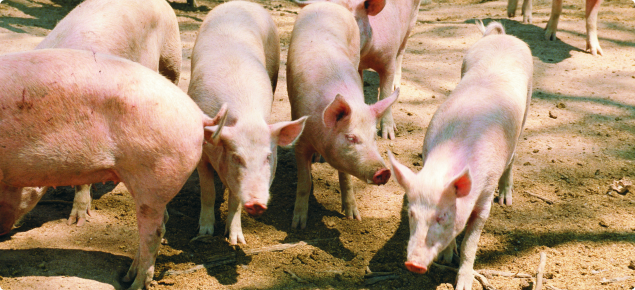Breeding and genetics of pigs
The most common breeds of pigs in Australia are Landrace, Large White and Duroc, although a number of other breeds are also available in smaller numbers (for example Berkshire and Hampshire). Most commercial producers use a mix of these main breeds to benefit from the effects of cross-breeding.
The genetic improvement program for a commercial herd will take into account the herd’s breeding objectives for performance traits — such as growth rate, feed efficiency and carcass quality and maternal traits — of litter size, piglet survival and milking ability. The estimated breeding value of these individual traits are combined in selection indices to identify boars and sows that match the herd’s breeding objectives.
Most genetic stock (live animals or semen) is provided by one of the large breeding companies operating in Australia, although there are still a number of smaller stud breeders still providing a service. The larger breeding companies use computer programs like PIGBLUP.
BLUP is an acronym for Best Linear Unbiased Prediction, a program that can accelerate the rate of genetic progress, especially for traits of low heritability such as litter size, by giving a more accurate measure of each animal’s breeding value. More information on breeding programs is available from the animal genetics and breeding unit based at the University of New England in New South Wales.
It is recommended that producers limit the source of their genetics to companies that have a high health status and that can provide the type of genetics that is required. Other criteria in selecting a supplier of breeding stock include their reliability with delivery times, if they submit pigs to a central test station or use the BLUP method in their selection program and whether they supply a performance report covering a 12 month period for comparison purposes.
Deciding what priority should be given to a breeding program will depend on the current performance of the herd as compared to industry benchmarks for the breeding herd and grower herd. Some breeds are more suitable to outdoor production systems, so choice of breeds is important in this situation.
Australia has quarantine regulations that prohibit the importation of pig genetic material into the country. This applies to all forms of genetic material including live animals, semen and frozen embryos.

